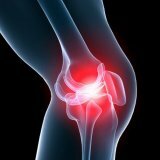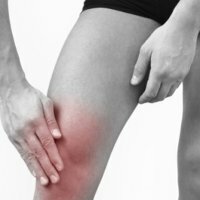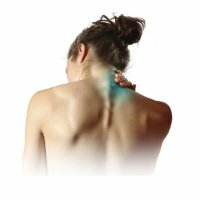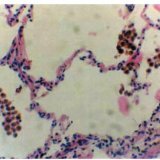Methods of treatment of arthrosis of knee joints
 Osteoarthritis of the knee joints( gonarthrosis) is most often manifested in women, more often full, suffering from varicose veins. Osteoarthritis often affects both knees at the same time, but it happens that over a long period of pain can be felt only in the area of one joint. Today we will tell you what are the methods for the treatment of arthrosis of the knee joints.
Osteoarthritis of the knee joints( gonarthrosis) is most often manifested in women, more often full, suffering from varicose veins. Osteoarthritis often affects both knees at the same time, but it happens that over a long period of pain can be felt only in the area of one joint. Today we will tell you what are the methods for the treatment of arthrosis of the knee joints.
Clinic of the disease
This disease begins, as a rule, imperceptibly, with insignificant pain when walking. The hardest thing for a person is climbing and descending the stairs. In some cases, pain can occur if a person needs to stand for a long time. With synovitis, there may be a violation of the outflow of blood and there may be soreness of the calves. So especially will rotate the eggs at night.
Gradually the joint begins to deform, the pains become stronger and stronger. A person can not normally flex his legs in the joints. When trying to bend your knees, there will be a sharp pain and a characteristic crunch. In addition, during the development of the disease a person can no longer straighten his leg to the end. The patient will walk, slightly bending his legs. Often, the development of x-and o-shaped curvature of the legs can be observed.
Gonarthrosis is very often combined with other changes in the knee joint, and it turns out that one disease actually begins to overlap another, as a result, the diagnosis of a disease is difficult. So, gonarthrosis often proceeds along with meniscopathy of the knee joint, which manifests itself as infringements or tears of menisci. In most cases, meniscopathy becomes the main cause of the development of arthrosis.
It is very difficult to diagnose a meniscus or arthrosis damage, because these changes in the joint begin to overlap. In this case, the treatment is initially directed at the elimination of arthrosis symptoms.
Methods for treatment of gonarthrosis
Drugs in candles, tablets and injections
Non-steroidal anti-inflammatory medications - indomethacin, diclofenac, ibuprofen, piroxicam, flexene. With the appointment of these drugs, almost every doctor starts treatment of arthrosis.
When gonarthrosis, such remedies are used when it is necessary to eliminate swelling and swelling of the joint, i.e., in effect, relieve the inflammation. Such drugs are not able to cure arthrosis, but they can significantly alleviate the condition of the patient, thereby reducing joint pain for the period of exacerbation of the disease.
Chondroprotectors - drugs designed to restore cartilaginous tissue.
Chondroitin sulfate and Glucasamine are classified as chondroprotectors - substances that nourish cartilaginous tissue and repair the structure of damaged cartilage.
These drugs are the most useful for the treatment of arthrosis. These drugs can not only eliminate the symptoms of the disease, but also affect the essence of the disease, although they work in different ways, each fulfilling its own unique task.
Their joint application contributes to the restoration of the surfaces of the joints, improves the production of joint fluid and normalizes its lubricating properties. This effect on the joints makes these drugs indispensable for treatment in the early stages of the disease. However, do not exaggerate the potential of these drugs.
Intraarticular injections
Corticosteroid hormones - triamcinolone, diprospan, floterone, hydrocortisone. The use of these injections for arthrosis is advisable only to suppress inflammation in the joint region, which manifests itself in the form of swelling and swelling of the knee. In this case, intra-articular injections will bring quick relief.
It is meaningless to apply such medications to patients who already have obvious bone deformity, leg curvature, ie, in fact, when pain is already caused not by swelling and inflammation, but by changes in the structure of the joint, the appearance of osteophytes. Chondroprotectors and enzymes. Unlike hormonal drugs, they are not used for joint swelling, because they are almost incapable of suppressing inflammation. But they have a beneficial effect on the treatment at the initial stage of the development of the disease that occurs without synovitis. In such a case, such injections will contribute to the partial restoration of the cartilage.
Hyaluronic acid. Introduction to the joint of similar drugs is a new and very effective way of treating arthrosis. Hyaluronic acid will in fact be a lubricant for the joints, in its properties it is very much like a natural knee lubrication. The injected injection can reduce the friction of the articular surfaces and improve the mobility of the knees, protect them from physical damage.
Local medications: compresses, ointments
The knee joint is not so deep under the skin, various local preparations can be used to treat arthrosis, they can improve blood circulation in the joints and in some cases can relieve pain.
The most effective means is dimexide-liquid, it has anti-inflammatory properties and is able to eliminate swelling of the joints. However, this drug should be used very carefully, it can cause burns and allergies.
Other ointments do not help much, because they have a low absorption, but they can also give good results in a number of cases. In order to alleviate the suffering of patients, various warming ointments and anti-inflammatory substances are used.
Physiotherapeutic treatment
With arthrosis, physiotherapy can significantly alleviate the patient's condition. First of all, it is worth paying attention to laser therapy, massage, cryotherapy, electrophoresis.
Operation
In the event that arthrosis is no longer possible to cure with drugs, an operation is performed to replace the joint. Operation can allow to return former capacity for work, even with arthrosis on 3-4 stages. However, this method has a very serious impact on the patient's health, he has to spend a lot of effort, the hind legs to undergo a recovery period, moreover, the operation is quite expensive and time-consuming, so the task of any doctor will be: to help the patient avoid surgery or postpone it to the maximum possibletime interval.



